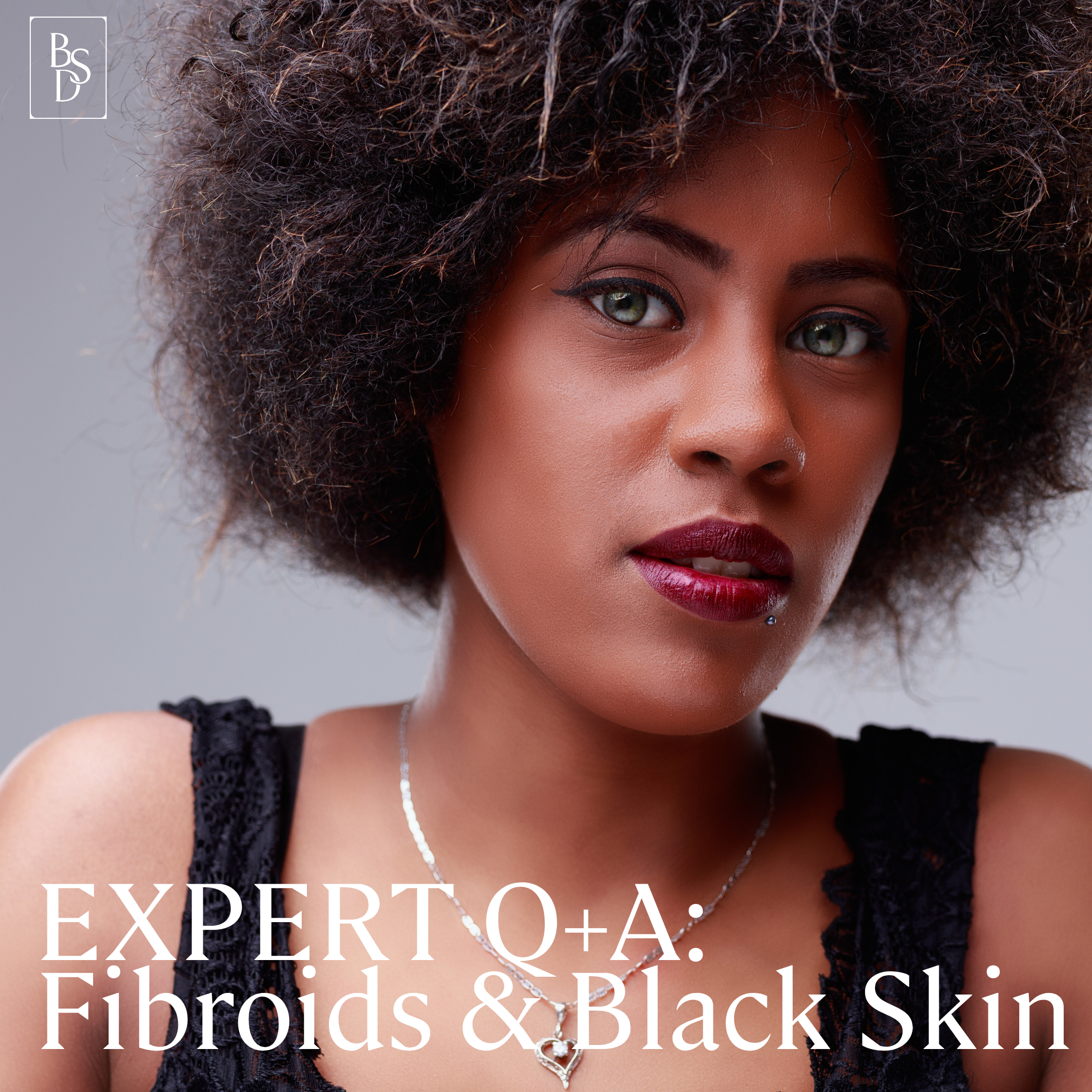Fibroids & Black Skin : Expert Q&A
Fibroids are a common yet often misunderstood condition that disproportionately affects Black women. While these benign growths develop in the uterus, their impact can extend far beyond reproductive health.
In this expert Q&A, the Black Skin Directory team explores how fibroids may indirectly influence the skin - from changes linked to hormones and inflammation to the visible effects of stress and treatment.
Although fibroids don’t directly cause skin conditions, our expert medical panel explain why their symptoms and complications can sometimes show up more noticeably on darker skin tones.
“Fibroids per se do not affect the skin directly however anaemia from iron deficiency from chronic heavy bleeding can dry the skin and make it more itchy and ashen in appearance leading to dull looking skin. In predisposed people, this drying can trigger eczema.
Anaemia can also make dark circles around the eyes appear darker as the amount of deoxygenated blood, which appears blue, is higher. Anaemia will also contribute to brittle nails, brittle hair and poor hair growth.
Women with pain from fibroids can develop a smooth flat lacy area of hyperpigmentation known as erythema ab igne (aka toasted skin syndrome) can occur on the abdomen, between the thighs or lower back; this is caused by hot water bottles being repeatedly used in an area in order to alleviate menstrual pain; it can take years to fade and will only fade if the heat source is discontinued.
Opiates in pain relief for fibroids (e.g. codeine in co-codamol) can cause itchiness leading to scratching. Scratching on dry skin can damage the skin barrier and leave hyperpigmentation that takes months to resolve.”
Dr Mary Sommerlad, Consultant Dermatologist
“Anaemia can create changes in the skin where it can look paler (particularly in darker skin tones), dull, sallow and less vibrant due to the anaemia caused by heavy bleeding associated with fibroids. Anaemia can also cause dark circles around the eyes due to reduced circulation and inadequate oxygenation of tissues.
High oestrogen levels can cause increase oil (sebum) production which can contribute to acne and skin breakouts and we know that in darker skin, acne and related scars can sometimes be more prominent due to post-inflammatory hyperpigmentation (PIH) - when darker spots or patches remain after acne heals.
The stress associated with chronic symptoms such as pain experienced with fibroids can exacerbate existing skin conditions like eczema or psoriasis which can cause more skin flare-ups and consequently hyperpigmentation. Also, the mental load of the symptoms and body changes (e.g. looking pregnant despite not being so and trying to conceive due to the fibroid size) can add to the stress and lead to more skin changes.
Black women tend to have more radical treatment for fibroids e.g. hysterectomies (2-3 times more likely) and so the skin changes related to the scars left from these procedures can occur including keloid or hypertrophic scarring which dark skinned individuals are at higher risk of developing.”
Dr Aziza Sesay, GP and Women’s Health Advocate
“The hormonal changes that sometimes accompany fibroids can have an impact on your skin.
Changes in oestrogen levels can sometimes lead to conditions like melasma, which is a change in skin pigmentation resulting in darker patches of skin, especially on the face where pigmentation can take a butterfly like appearance, which symmetrical patchiness.
On darker skin tones, these pigment changes can be more noticeable. It is the hormone changes rather than the fibroids themselves that affect the skin.”
Dr Sho, GP with special interest in Women's Health
Interview compiled by: Crystal Angelee




